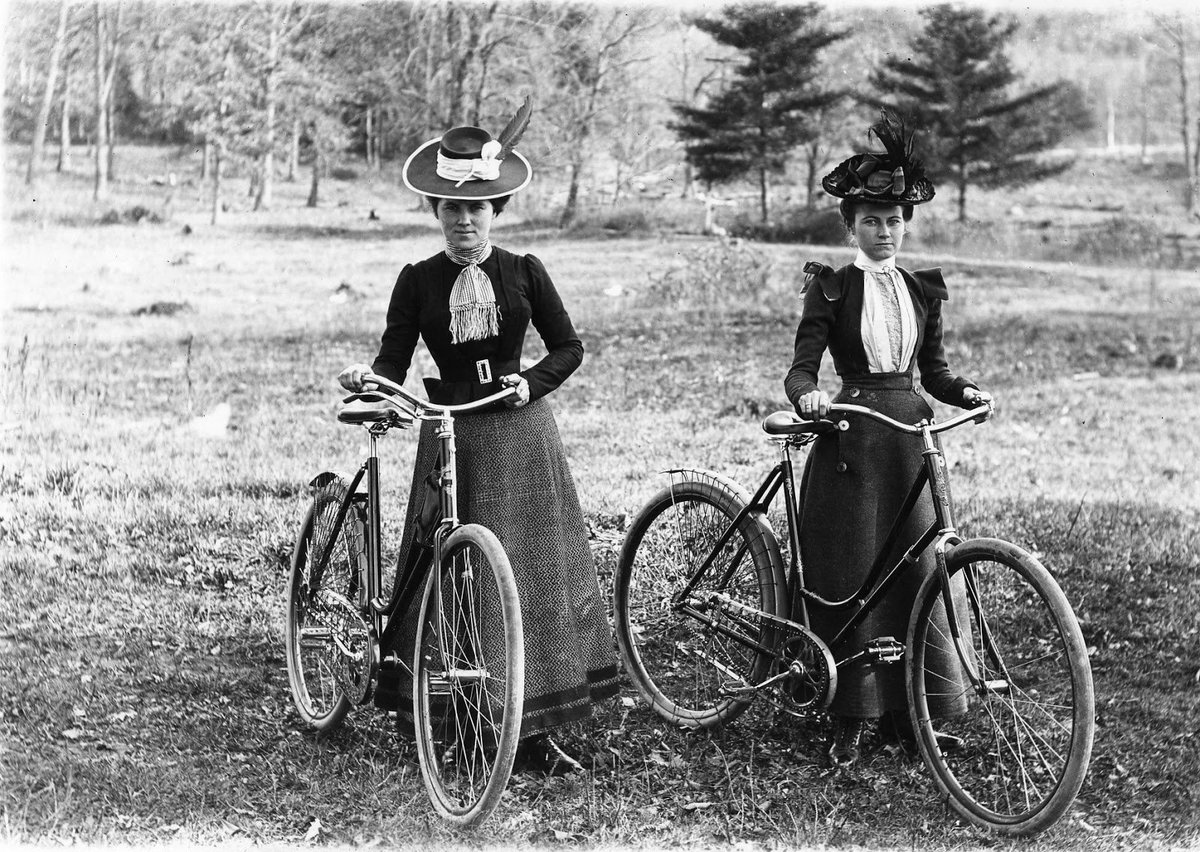In the 19th century experts warned women about a disease called bicycle face which meant getting stuck with the awkward faces they made while biking

In the 19th Century, Beware of Bicycle Face - A Peculiar Disease
The 19th century was a time of great progress and innovation, with notable advancements in technology and transportation. One such invention that gained rapid popularity during this period was the bicycle. However, alongside the excitement and freedom that the bicycle offered, there were also concerns and warnings raised, particularly when it came to women and a peculiar ailment known as “bicycle face.”
What is Bicycle Face?
According to experts of the time, bicycle face referred to the unattractive or distorted expressions women made while riding a bicycle. They claimed that the constant strain and effort required to maintain balance and control over the unconventional mode of transportation could lead to facial disfigurement. This purported condition quickly gained attention and sparked concern among the public, leading to much debate on the potential dangers associated with this new hobby.
Expert Opinions
In an era when societal norms placed great importance on appearances and etiquette, prominent medical professionals and social commentators of the time did not hesitate to express their concerns about bicycle face. Dr. A. Shadwell, a British physician, believed that the continuous strain experienced during cycling could permanently disfigure a woman’s face. He warned against the excessive effort and unnatural facial expressions that this activity demanded, cautioning that it would endanger physical beauty, especially for women.
Another influential voice at the time was Katharine Cook Briggs, an accomplished author and member of the Women’s Educational and Industrial Union. Briggs claimed that the exertions required while cycling would inevitably lead to “ugly face” and stated that women should avoid the “bicycle riding desecration.” Her strong opinions had a substantial impact on public discourse about women and cycling.
The Great Debate
As the warnings about bicycle face spread, many women were caught in a dilemma. On one hand, cycling provided them with newfound freedom and mobility, allowing them to explore their surroundings and experience a sense of independence. On the other hand, the fear of permanent disfiguration made them question their participation in this popular pastime.
Publications from the time revealed differing opinions on the matter. Some medical professionals dismissed the idea of bicycle face as a ludicrous claim, arguing that the facial expressions one makes while cycling are temporary and caused by effort rather than any real danger. Others recommended adopting different seating positions or wearing protective masks to minimize the supposed effects of the disease.
Bicycles - Liberation or Danger?
Despite the debate surrounding bicycle face, women continued to embrace the freedom and empowerment that cycling provided. The bicycle became a symbol of liberation, granting women the opportunity to traverse longer distances, participate in new social activities, and challenge traditional gender roles.
Throughout the years, bicycle face faded into obscurity, eventually becoming nothing more than a curious relic of an era obsessed with outward appearances. While it may seem absurd to us now, the prevalence of bicycle face warnings in the 19th century exemplifies the clash between technological progress and societal values.
Today, we can look back at the bicycle face panic as an intriguing reflection of the conservative mindset prevalent in the 19th century. It reminds us how far society has progressed and how our perception of beauty and physicality has evolved over time.
For a glimpse of this era, take a look at these fascinating historical images:


Source: Google Books
Related Posts
Quick Links
Legal Stuff

